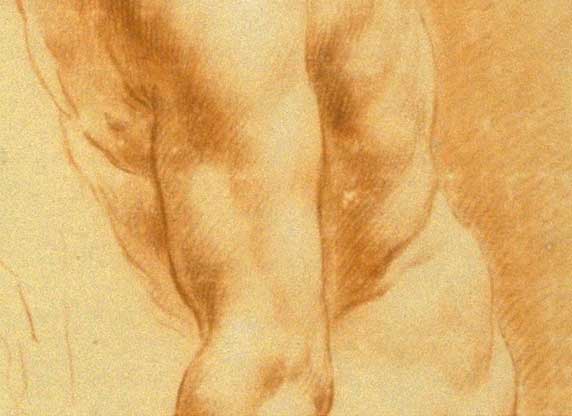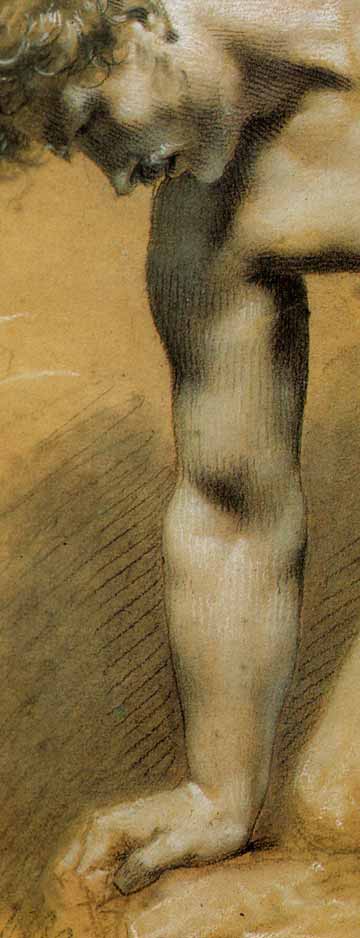



Unique & Obscure
A COMPARATIVE LOOK
AT
ACADEMIC TECHNIQUE

Unique
Let's take a look at an example of
French academic figure drawing.
In this drawing by an anonymous artist, and its detail below,
we can find the many shared traits with Prud'hon's drawings. (Ignore the
fact that the chalk is red -- we can still find the common traits of academies)
The shared traits are:
- careful analysis of forms within the body
- variety in outline
- diagonal hatching in background and other non-figure subject matter
- stumped tone beneath the hatching
- hatches equidistant, not crossed, generally straight, applied in
rows
- hatches shift direction very slightly over deeper form changes


Compare to this drawing by
Prud'hon:

The difference is:
- while traditional hatching runs on an oblique
path over form,
- Prud'hon's hatching runs parallel to form's
length, on the whole.
Obscure
If it was only hatching that was employed
in his drawing, analysis would not be so difficult. However, due to the
extensive stumping in his drawings, we are left with questions about early
application prior to the final hatching.
The pattern of hatch direction that Prud'hon used is quite sophisticated.
Managing the colliding groups that invariably result is very tricky. There
is no written record of the thinking process that Prud'hon used in making
his application decisions. Through close observation, certain "rules"
have begun to surface, but there is no assurance that Prud'hon would agree
with them.



 Next Page: Observations:
Prud'hon's Materials
Next Page: Observations:
Prud'hon's Materials
What's New? | Shortcut
Entrances: | Studio
-| Alzofon
Art Institute -|
Idea Library | Academy
| Guest Wing |
Rebecca Alzofon can be e-mailed at
rebecca@art.net
This page updated July 16, 2003
 1999 by Rebecca Alzofon.
All rights reserved.
1999 by Rebecca Alzofon.
All rights reserved.




